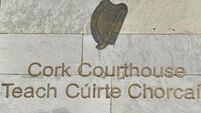Public urged to catch cosmic fireworks display

Astronomers are predicting that up to 1,000 shooting stars an hour could rain down on Earth hour as our planet passes through debris from Comet 209P/LINEAR in the next week.
The head of Astronomy Ireland, David Moore, has urged the public to get outside next Friday night, May 23, to try to catch a glimpse of the celestial fireworks that will fly from dusk till dawn.
“Imagine a thousand shooting stars per hour. It could be one every five to 10 seconds. It could be really spectacular,” he said.
“Shooting stars are very rare and most people accidentally see one once every few years. If they go out for five to 10 minutes on that particular night they could see more than an astronomer sees in a lifetime. It is a very big event cosmically.”
Comet 209P/LINEAR, discovered in February 2004 by Nasa, is described as a relatively dim comet that dips inside the orbit of Earth once every five years as it loops around the sun.
Forecasters say the newly named Camelopardalids shower has never been seen before, unlike the annual Perseids shower in August. Experts expect to see up to 1,000 meteors an hour, as well as the Earth encountering debris from the comet.
Mr Moore said the science for predicting meteor storms has greatly advanced but is still not completely foolproof.
He said: “This particular [shower] will be caused by dust off a comet five million miles away. The conditions are just right for us to get a decent shooting star shower this one year.
“We have had meteor storms in living memory. There were some huge ones in the 20th century, in 1933 and in 1966 they had 40 shooting stars per second.
“In 1990, we had a shooting stars shower which produced 300 or 400 shooting stars per hour and we’re hearing this one will be a couple of times better than that.
“Every decade or two there is a meteor storm but now they’ve figured out what causes them and they have been able to predict them.
“It will blast one half of the Earth. It is a very big event cosmically. In the past, they weren’t able to predict them but they have figured out now how to predict them, although it is still not totally reliable science.
“It’s more than likely the star shower will materialise and there is a decent chance it could be a storm. You definitely want to be outside watching. If it does happen you are in for the celestial fireworks display of a lifetime.”
Mr Moore said North America will see the shooting star shower at its height as it will be night there when the Earth hits the comet dust.
“It currently favours north America but we are the last country to North America. We could catch the whole event,” he said.
“People should get outside on the night of the 23rd and the morning of the 24th from dusk till dawn if you can stay up that long.”
He said Astronomy Ireland will be urging people to count the shooting stars.
“We will be asking people around Ireland to count every one they see every 15 minutes and email the results in to us for a survey we will be doing.
“That survey will be very important. We are the last population on the west coast of Europe and there will be very few people watching from the Atlantic Ocean.
“Our observations in things like this are often critically important because of where we are located. We are not surrounded by other countries. We will be trying to motivate the country to go out and look and count them.”
To log the shooting stars, go to astronomy.ie













